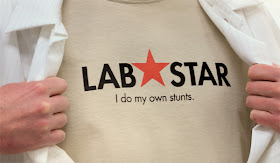Welcome back to Genetics and Beyond! Today, new curiosities for all public that could make us think that Science is even more interesting than what we thought.
Let's start introducing the case. Imagine you are living at the beginning of the XVIII Century. You are a normal person, with ten normal children living in your house on the countryside. Suddenly, one day one of your kids come home after doing the laundry in the river with high fever and skin rashes. At the beginning, with your short knowledge of medicine, you could think that in few days it will go better, but actually you see that your other kids, your partner and also you start having the same symptoms. Nothing to do.
This was a normal situation that happened in those days. Sometimes, if you were lucky, you could find a country doctor. But it wasn't until the mid Century when one as good as Edward Jenner was born in Berkeley, England.
 |
| Smallpox symptoms. Picture by commons.wikimedia.org |
After his strong education thanks to his father's position, he became a country doctor with experience in surgery. But in science, a good scientist will not leave a question unanswered, even if it's not from your specialty. And that was what Dr. Jenner did. For several weeks, different women came to him because they were suffering what today is called smallpox. They had skin rashes in their hands, and a mild fever.
Dr. Jenner knew about the symptoms of smallpox, a very common disease in the XVIII Century world. But he saw that the symptoms of all those women were similar, and also milder than the normal disease. So he started investigating about the commons between the ladies, and he realized that all of them were milkers. Also, after some weeks of monitoring, he also realized that none of them caught smallpox again. His first conclusion: These milker ladies had caught the cowpox (same as smallpox but in cows), and after that, never again.
 |
| Test for the vaccine experiment. Picture from www.med.umich.edu |
So he decided to prove whether his conclusions were right or not, so he took a sample of the virus from the hand of a milker lady and inoculated it into a 8 years old kid (you know, methods of this times). After several weeks suffering fevers and mild skin rashes, the kid was recovered. And then, Edward Jenner inoculated him the human virus of smallpox, to prove if the kid got infected or not. ¿What do you thing was the result? Of course! No disease anymore.
Before finishing, thank you for reading us. This discovery is the one which has saved more lives in the whole human history!
PD: In India or China this method but without injection (eating pushes from other diseased) was done 2.000 years before. Catch the tip!



















